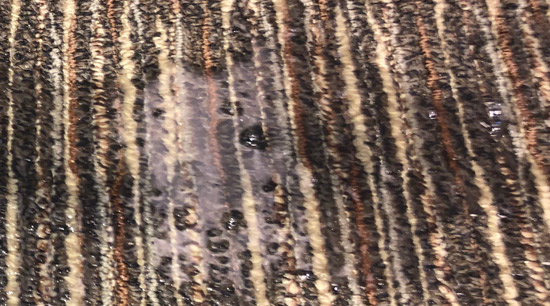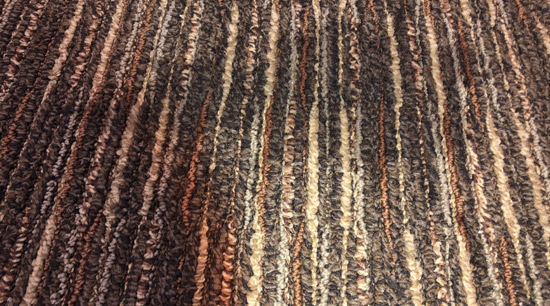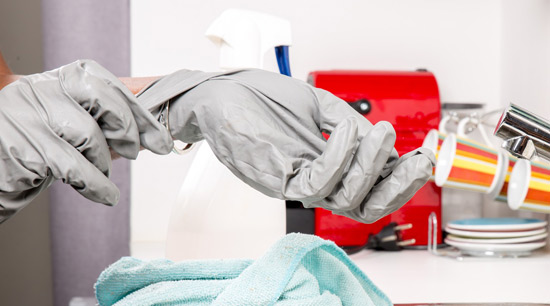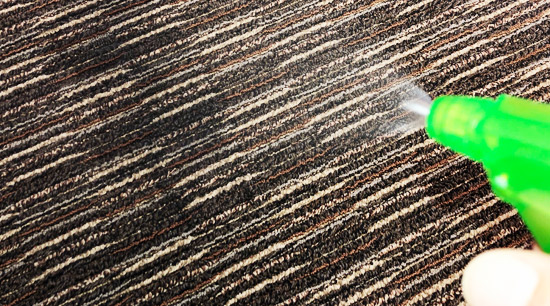How to Detect, Remove, and Prevent Carpet Mold after Water Damage
Homeowners beware! Mold can be growing under your carpet, and you wouldn’t even know it. Even the slightest amount of water damage from a leaking pipe, appliance malfunction, or flood can initiate mold growth in your home’s carpeting.

Mold causes discoloration, unpleasant odors, and respiratory problems if left growing in your home’s carpeting. Even after the slightest water damage, extra care should be taken when drying out your carpet and the affected area should be monitored long after the damage has occurred.
alpharettawaterdamageremoval.com explains what the signs of carpet mold are, how to remove mold from the carpeting after water damage, and how to prevent carpet mold.
Signs and Detection of Carpet Mold
All it takes is a little moisture, and dark space and mold can grow quickly causing a lot of hidden damage while affecting the health of a home’s occupants.

The following are signs and ways to detect mold growing in or beneath your carpet:
A Smell You Can’t Get Rid of – Mold has a distinctive off-putting smell that permeates throughout a home. If you have a musty, somewhat sour odor in the air, you should start searching for the cause.
If none of your furniture, baseboards, or fixtures are affected, start checking your carpet. Pay particular attention to areas that have recently been affected by water damage or have had a problem with moisture in the past.
Visual Inspection – Carpeting comes in a variety of colors, and some of those colors may hide the growth of mold until it becomes a severe problem.
When visually searching for mold, watch for circular patterns of green, white, or black discoloration in your carpet. Use a handheld lamp with a bright (100w) light or spotlight to more easily detect any color variation or discoloration in your carpet.

Check Underneath Your Carpet – When a visual inspection doesn’t turn up any clear signs of mold growth, but the odor persists, it’s time to get physical with your carpet.
In areas where the odor is the strongest, pull up the carpeting from the corner and inspect underneath it, including underneath the padding.
Home Testing Kits – Your local home improvement store should carry easy to use DIY mold testing kits.
Hire a Professional Mold Inspection Service – If you cannot locate the source of the mold, or are unable to thoroughly search for it, hire a professional mold inspection service or water damage removal company to find and eliminate it.
For information on the danger of mold to humans, read alpharettawaterdamageremoval.com/is-mold-dangerous-to-humans/, and visit alpharettawaterdamageremoval.com/ga-mold/ to avail professional mold services.
How to Remove Carpet Mold
Before attempting to remove carpet mold, ensure that the source of the moisture that caused it has been fixed or eliminated. When working with chemicals or disturbing areas of mold wear protective clothing (including goggles and breathing mask) and make sure that the area or room is well-ventilated.

For small areas of mold in your carpeting, the following methods will help you remove it safely:
Method 1 – Baking soda and white vinegar
• Sprinkle liberal amounts of baking soda over the mold and around the affected area. Leave it overnight to absorb moisture and odors.
• Vacuum up the baking soda and carefully dispose of the bag or container’s contents (preferably outside).
• Liberally apply white vinegar to the affected area and vigorously scrub it.
• Blow dry or place a fan over the area to completely dry it out.
• Consider replacing the padding underneath the carpeting to prevent recurrences.
• Rent a HEPA (High-Efficiency Particulate Air) commercial wet/dry vacuum to further deep clean and sanitize your carpeting.
Once the mold has been removed, the regular use of a dehumidifier will help keep the problem from recurring.
Method 2 – Anti-mold treatment or bleach
• Anti-mold and antifungal treatments can usually be found wherever household cleaning products are bought. Read the label to determine that the product is safe for use on carpets, products used for kitchen and bathroom cleaning may damage or discolor your carpet.
• Seek products that include a “mold barrier” or “encapsulate treatment.” These products leave a protective barrier on carpet fibers that prevent recurring mold growth.
• Follow the instructions provided on the container for best results and never mix cleaning products.

• A mixture of half a cup of color-safe bleach to one gallon of water can be used in place of a commercial product.
• Liberally apply the bleach mixture to the affected area and vigorously scrub it.
• Blow dry or place a fan over the area to completely dry it out.
• Consider replacing the padding underneath the carpeting to prevent recurrences.
• Follow up by renting a HEPA commercial wet/dry vacuum to further deep clean and sanitize your carpeting.
To ensure that products are safe to use on your carpet, and won’t cause discoloration, test them in a hidden area or where furniture normally covers it.
Method 3 – Remove the affected carpeting
In many cases where the mold has grown through the carpet backing and into the padding, the best practice may be to remove and replace the carpet and padding carefully.
If the affected area you are attempting to remove or treat is larger than a sheet of printing paper, has infected the baseboards, or has grown into the walls, it is highly recommended to call a professional mold remediation company to remove the mold and thoroughly sanitize the affected area.
In extreme cases of humidity or mold recurrence, it may be recommended to completely remove the carpeting from your home and replace it with vinyl, tile, wood or other non-porous floorings.
How to Prevent Carpet Mold
The following steps will help you maintain a mold-free carpet and household:
• After a flood, immediately dry and sanitize all affected areas.
• Eliminate any sources of moisture or water leaks, and treat any contaminated areas.
• Increase ventilation to evaporate moisture.
• Open windows in the early hours to reduce moisture buildup from overnight.
• Vacuum regularly to remove dust particles and mold spores.
• Run a dehumidifier in less ventilated rooms to remove moisture from the air before it settles to the carpet.
• Use regular home lighting to slow and prevent mold. While normal lighting works well to prevent mold from spreading, UV C lights are very effective in eliminating mold spores.

In addition to the steps mentioned above, regularly inspect water connections on bathroom, kitchen, and appliances throughout the house to ensure that no leaks or moisture could potentially lead to mold. Read this article to learn how to handle and prevent pipe bursts alpharettawaterdamageremoval.com/winter-pipe-bursts-preventing-handling-them/
Control and Prevent Carpet Mold Damage
The slightest amount of moisture can initiate a mold nightmare. Whether from a flood, pipe burst, appliance malfunction, or overly humid environment, mold can settle, grow and spread in your carpet, leading to serious health consequences.
In this article, you discovered the signs of, and how to detect carpet mold, how to safely remove carpet mold, and how to prevent it.
Your refusal to address mold growing in your carpet may lead to grave health consequences, loss in property value, and expensive structural damage to your property.
Sources:
https://extension.umn.edu/moisture-and-mold-indoors/dealing-and-preventing-mold-your-home
https://www.ag.ndsu.edu/flood/media-resources/news-releases/after-the-flood/flood-damaged-carpets-rugs-may-be-saved
https://www.cdc.gov/cpr/infographics/8tipstocleanupmold.htm
(678) 505-0266
The post How to Detect, Remove, and Prevent Carpet Mold after Water Damage appeared first on http://www.alpharettawaterdamageremoval.com
Comments
Post a Comment